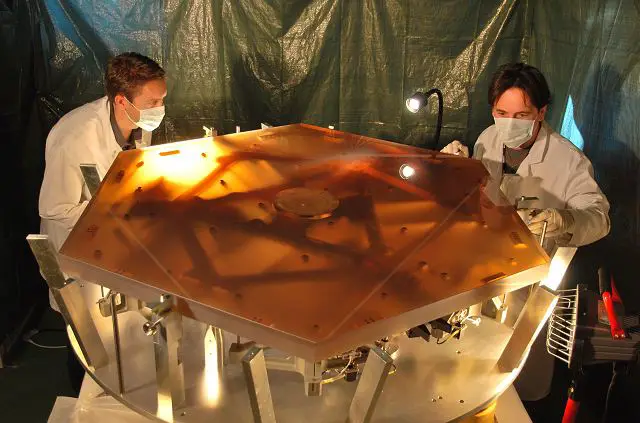The E-ELT is a huge telescope with a primary
mirror measuring some 40 meters in diameter (130 ft),
designed to significantly improve our understanding of
the Universe. It comprises nearly 1,000 mirror segments,
whose shape and position are continuously adjusted using
miniature electromechanical actuators. While improving
the overall image quality, this giant mirror also provides
a 15-fold increase in the surface area that gathers in
light from the stars, outpacing all telescopes built to
date. The European Extremely Large Telescope will drive
considerable progress in astronomy, especially through
its ability to directly acquire images of exoplanets (outside
the Solar System). It will start operation early in the
next decade pending a final go-ahead for E-ELT construction
from the ESO Council.
The prototype mirrors for the E-ELT are produced by Reosc,
a Sagem entity in Saint-Pierre-du-Perray, near Paris.
This facility is unrivaled in Europe, with its ability
to polish large mirrors to a surface accuracy of several
nanometers, especially the aspheric segments located off-axis
on the mirror.
Sagem met several major technological and industrial challenges
on the E-ELT program. For instance, the 1.4-meter aspheric,
hexagonal-shaped segments were produced to unprecedented
precision out to the edge of the mirror, using an advanced
computer-aided polishing technique and ion beam machining.
The large radius of the telescope mirror (84 meters/275
ft) made it very difficult to measure these segments,
thus requiring the use of an “extra large”
test bench.
Sagem develops and produces high-performance optics for
satellites, large telescopes, high-energy lasers and the
semiconductor industry. For example, the company made
the single-piece 8-meter (26 ft) mirrors for Europe’s
Very Large Telescope (VLT), and the international Gemini
telescope. It also made the 11-meter (36 ft) mirror for
the Gran Telescopio de Canarias, the mirrors for the Nirspec
instrument on the James Webb Space Telescope and the Gaia
astronomy satellites, as well as optics for Meteosat,
Spot and Helios satellites.
















